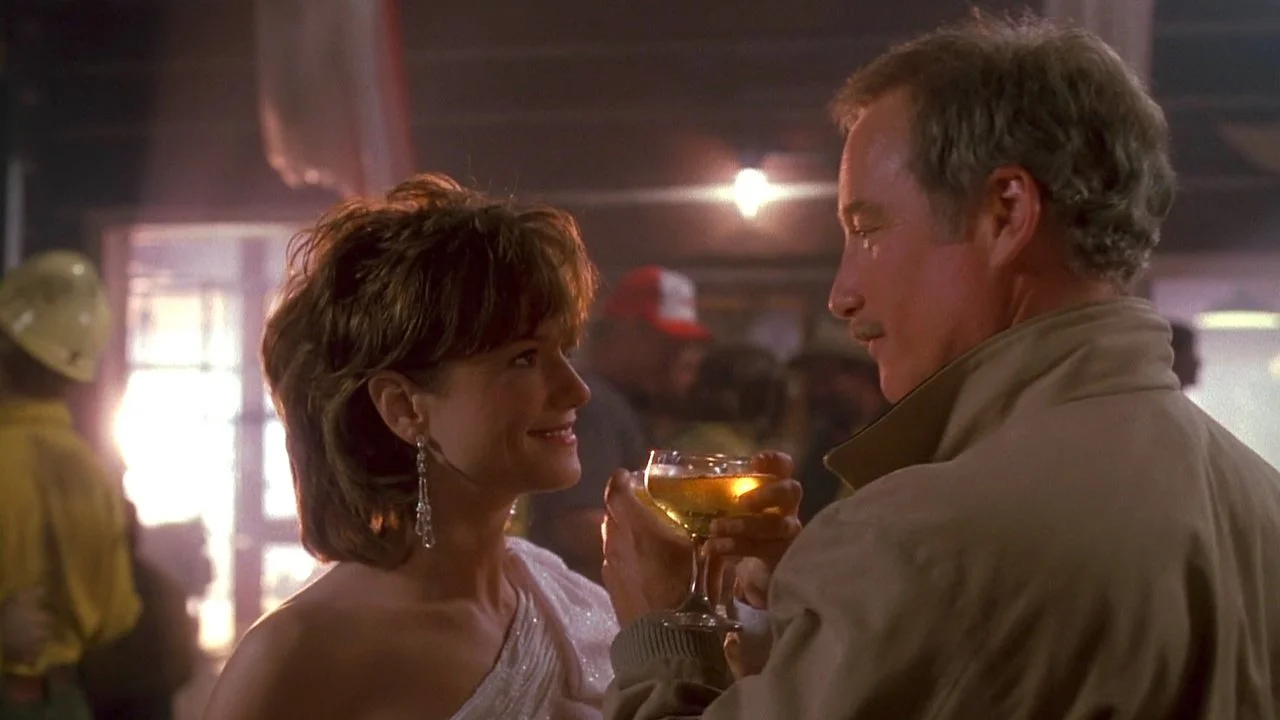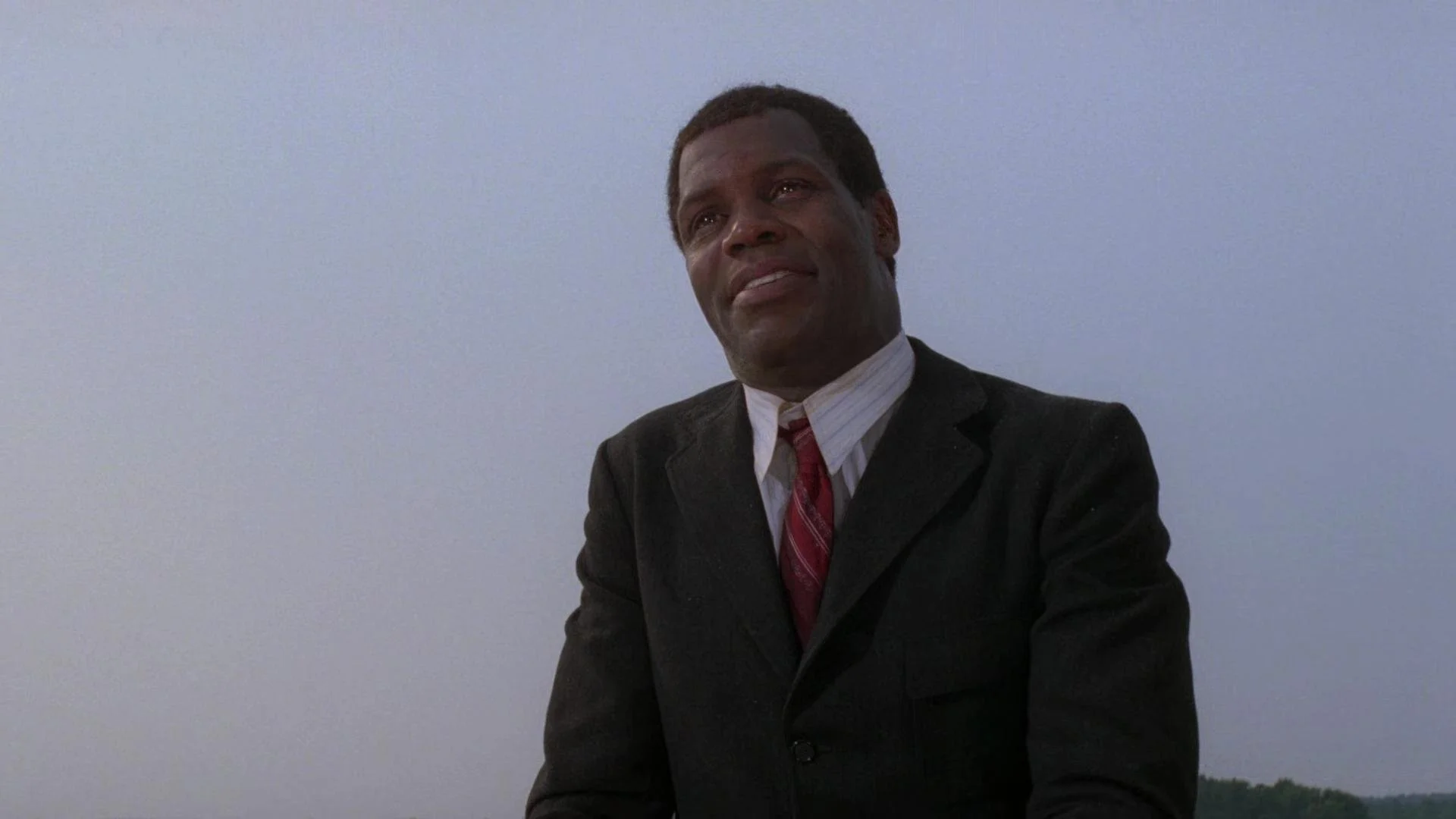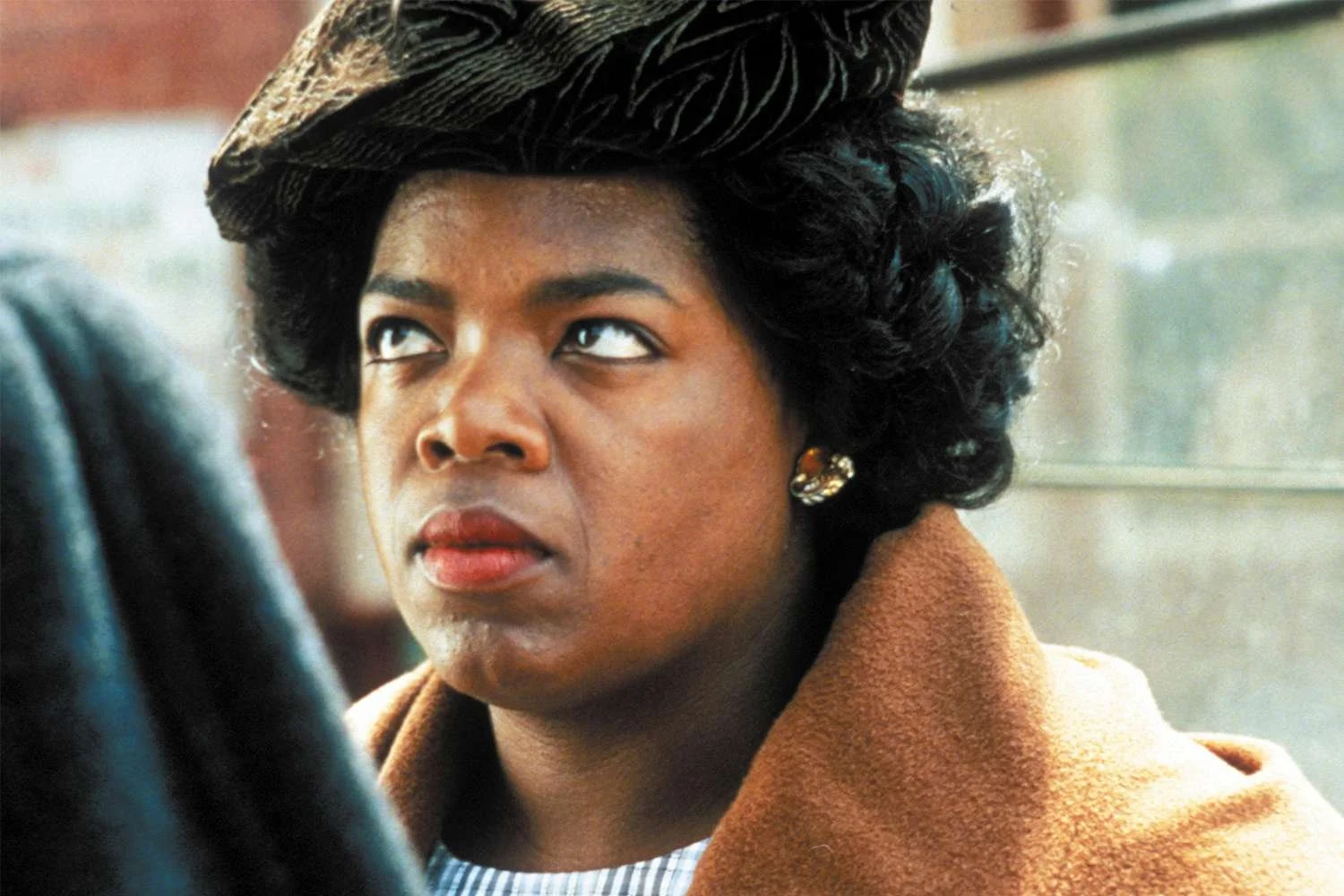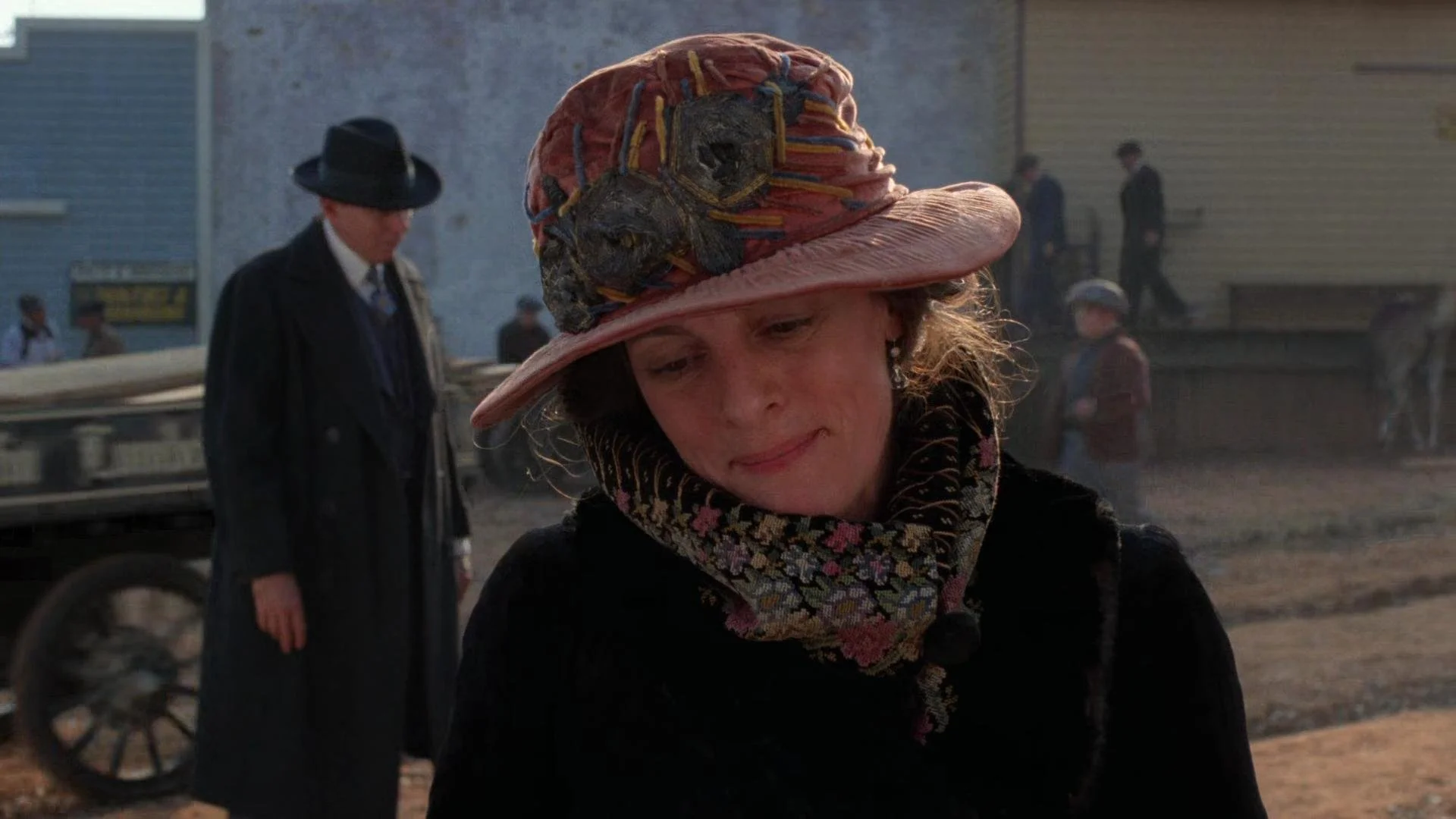Recent Articles
Steven Grows Up With THE COLOR PURPLE: Spielberg Summer 2 Continues!
This week, Steven Spielberg begins to expand his directorial palette with 1985’s THE COLOR PURPLE, a sweeping literary adaptation featuring many great performances, and an ever-growing master behind the camera. However, it’s ever fascinating for the moments where you catch Spielberg being unsure with how best to depict serious stories of human misery. Yes, it begs the question: was he the right person for the job? But one also has to ask: without this, does Spielberg become the director we know him to be today?
I often find myself struggling with movies about human misery.
For a couple of reasons, I hesitate to make reference to “message movies”, as these types of films are often called. For one, I kind of think all movies are “message movies”; what is a film if not an artist communicating with people, even if what they’re trying to communicate is “seeing hot people try to defuse a bomb is cool” (in the case of Jan de Bont’s SPEED) or “I’m a fucking freak” (in the case of Dan Aykroyd’s NOTHING BUT TROUBLE). But for two, the term “message movie” has always felt pejorative to me, the unspoken implication being “a movie is trying to open my mind to something, oh no!” That said, there’s no precisely correct way to teach an audience anything, and I think the pitfalls to getting it wrong is what causes some people to get bumped, including myself.
There appears to be two main ways a movie teaches us about human misery. It can go for a glossy Hollywood style, where emotions are cued with swelling & active scores, and the screenplay lands itself on some kind of inspiring, if not precisely happy, conclusion. The tradeoff with this style is that you’re still providing the audience their most common aim of watching a movie in the first place (to get swept away from reality for a while) without risking alienation, but are not precisely providing…well, reality, defeating the purpose of the intense subject matter in the first place. So, you can instead go for stark, relatively uncompromising realism. In that method, you remain blunt and truthful, but at the risk of closing yourself off from wide swaths of potential ticket-holders (not everyone feels like watching something that bleak).
In THE COLOR PURPLE, you feel a movie that seems to be vacillating between both styles, unsure of how to exactly find the marriage between the two. And I suspect this may be because Steven Spielberg himself was aiming to go for the second style, while ultimately feeling more comfortable with the first.
It makes for a fascinating, not wholly bad, viewing experience. We’ve reached a Spielberg movie I had never seen! Always exciting. Let’s talk a little COLOR PURPLE!
THE COLOR PURPLE
Directed by: Steven Spielberg
Starring: Whoopi Goldberg, Oprah Winfrey, Danny Glover, Margaret Avery, Adolph Ceasar, Rae Dawn Chong
Written by: Menno Meyjes
Released: December 18th, 1985
Length: 154 minutes
Adapted from the 1982 Alice Walker novel of the same time, THE COLOR PURPLE tells the epic story of Celie Harris-Johnson, a woman born into a horrifying world; by the time she’s a teenager, she’s already lost two children fathered by her dad. Not long after, she’s married off by the same dad to another abuser, a man known as “Mister”. The only shining light in Celie’s life is her younger sister, Nettie. Seeking refuge from their dad, Nettie ends up living with Celie and Mister, an arrangement that collapses after Nettie refuses to let him rape her. From there, it becomes a film-long quest for Nettie and Celie’s paths to hopefully once again unite.
THE COLOR PURPLE is a real fun time, as you can see. However, it should be said that, although the subject matter remains serious throughout, there are many moments of life. And light. There’s song and dance and genuine displays of love (and, yes, the color purple), just like there is in even the darkest parts of lives. But the dark realities of Celie’s life, as it is for so many of those in marginalized communities, both then and now, always seem to boil back to the surface.
The cast is interesting, especially considering its lead is someone we don’t really associate with drama these days. This was more or less Whoopi Goldberg’s screen debut*, and she’s done serious roles over the decades, for sure. But I’m guessing most people my age associate her as one of the rotating Oscars hosts in the 90’s and 00’s, or as one of the hosts of THE VIEW, which has made her a regular source for dumb culture war controversy (not helped by her penchant for making statements that don’t always make a lot of sense).
*Unless one counts William Farley’s 1982 indie flick CITIZEN: I’M NOT LOSING MY MIND, I’M GIVING IT AWAY.
Anyway, she’s pretty good in this, and is putting in the type of performance whose power doesn’t really hit you until after you’ve watched the movie and sat with it for a few days. It’s a performance fueled by repression, which means it’s robbed of the ability to be showy, like others in the movie get to be. But Goldberg doesn’t need to be showy here anyway; she’s able to absorb the series of blows that Celie’s life takes and is able to get us to track her emotions even when she’s silent. It’s the type of performance in the type of high-profile performances that practically guarantees someone an Oscar nomination (and, lo, she was).
I had two other standouts. For one, Danny Glover does an incredible job with a difficult role. Mister is one of those characters who is, for 97% of the runtime, just a bottom-of-the-barrel scumbag, not so much wanting a wife as a slave, all the while openly lusting after another woman, Shug Avery, the proverbial One That Got Away. He’s miserable all the way through. There’s a very real risk of a character like this serving nothing but a stone over the neck of the movie; can you really watch a guy traumatizing everyone around him for two and a half hours?
But, Glover is successful in making him seem…almost charming at first! To be clear, there’s nothing charming about the system of marriage as depicted in the movie (guy walks up to another guy and says “I wanna marry your daughter”, thus opening up formal negotiations). But there’s just enough of normalcy about him, even a nice smile, at the beginning that you trick yourself into thinking this may work out for Celie. Crucially, you also buy why a woman as self-assured as Shug might bother wrapping him around her finger for as long as she does.
I was also really taken by, of all people, Oprah Winfrey! She’s been known my entire lifetime as this person that’s just always been…around, first as a television personality (there appeared to be some unwritten, but fully abided, law in the 90s and 00s that at least one TV set in every American suburban household had to have The Oprah Winfrey Show on, even if nobody was actively paying attention to it), then as this figure people get either aggressively defensive, or aggressive, about. Oh, and I suppose she’s responsible for platforming a half dozen of the biggest dipshits to ever live, one of which is currently in charge of your parents’ healthcare. But…um…it’s easy to forget she has something like a dozen genuine film roles as well! That’s pretty cool!
This was also her film debut and I think she probably gets the splashiest role, and arc, as Sofia. She gets to play a steadfast, confident woman in the beginning, with some genuine comic moments (one of the funniest moments in a movie designed to not have many involves everyone realizing she’s about to beat the shit out of someone at the jook joint), and then we go through the brutal process of seeing that confidence and independence stripped away from her, never to be returned, in the hands of white people both actively brutal, and self-assuredly “helpful” (more on Mrs. Millie in a bit). Much like Glover, Oprah does a striking job selling us on both ends of Sofia. By the time we reach the end, when she’s become this physically and spiritually beaten husk, you just want to crawl into a hole somewhere.
There are a lot of interesting thematic elements to THE COLOR PURPLE, the most compelling one being that of the role of a father. Shug (Margaret Avery) insists at one point that the best thing for a child is to have both a mother and father in the household. This is in spite of all evidence to the contrary displayed throughout the movie; Celie’s father is maybe the biggest monster in the whole story, kicking off a lifetime of trauma for her and Nettie. Mister is a miserable and inattentive father himself; all of his children grow up to be lost and immature adults. Through the prism of fatherhood, we even get some insight into what made Mister the way he is. His dad (played by the great Adolph Caesar) enters the story from time to time and is brutally honest with his son, in his own unique way that is neither precisely honest nor helpful. He recognizes the nasty qualities that Mister now displays in his adult life, but isn’t able to fully diagnose it, implying the women around him are to blame. One has to wonder how much better the world of THE COLOR PURPLE might have been had we been able to fully test Shug’s theory.
Another element that may take some who haven’t seen the movie or the book by surprise: the monsters and villains in this movie about Black pain are not just an interchangeable roster of racist white folk. (Some of the scariest people in this movie are, in fact, Black men, a fact that would earn it a good degree of controversy and, perhaps, cost it even a single Oscar win). That said, there are deeply racist white people in this movie, but the one that sticks out in my mind as the most sinister is Miss Millie, the wife of the mayor that attempts to hire Sofia on as a maid. She sticks in my craw so intensely because she’s a white character that, in her mind, is being helpful! She’s giving this poor colored woman a job (as if she had asked in the first place). Even though Sofia refuses, Miss Millie ends up getting her way; Sofia’ refusal gets her beaten by a mob and arrested. When she’s finally released, it’s into the custody of…Miss Millie, who’s delighted to now have someone who can teach her to drive. She commoditizes a Black body to feel better about herself. It’s a profoundly evil character, and she doesn’t even know how evil she is.
I do think Miss Millie is representative of Spielberg’s discomfort with some of the material. Millie is given some weird comic material to play; her aforementioned inability to drive causes crowds to start bolting when she hops into a car, which is funny. But it’s a broader joke that we see anywhere else in THE COLOR PURPLE (and plays out in juxtaposition to a concurrent serious moment), perhaps an attempt by Spielberg and screenwriter Meyjes to find the audience some comic relief. It’s a good instinct, but it’s acted on in an uncomfortable way.
Spielberg’s discomfort comes out in other, more active ways. One of the biggest blunders Spielberg makes with THE COLOR PURPLE (and he’s fully aware of this) was the decision to de-emphasize the gay relationship Celie and Shug begin developing. It’s important to remember this was dead-fuck in the middle of the 1980’s, where homophobia was actively accepted, and a federal government was mitigating an AIDS crisis essentially by pretending it didn’t exist. In that specific context, it’s a reasonable business decision for Spielberg to have made, especially when you consider he wasn’t yet known as a “social issue” filmmaker in 1985.
However, it’s a lousy creative decision, especially since that relationship is one of the most interesting and emotionally surprising things to happen in THE COLOR PURPLE’s entire runtime. Considering how much the two characters’ lives have been altered by the same abusive, arrested man, and how limited the role of a woman could really be in that place and time, Celie and Shug coming together in a romantic way feels actively defiant. But, besides that one scene, it doesn’t get referred to much, or even all that alluded to, although it hangs over the second half of the movie. I haven’t seen the 2023 musical adaptation, but it apparently features the lesbian relationship with a fuller chest, which makes me intrigued. One wonders how far into it Spielberg would go if he had it to do over again.
Anyway, Spielberg’s official response to this softening of the queerness inherent to THE COLOR PURPLE’s text is thus (from a 2011 Entertainment Weekly interview):
There were certain things in the [lesbian] relationship between Shug Avery and Celie that were finely detailed in Alice’s book, that I didn’t feel could get a [PG-13] rating. And I was shy about it. In that sense, perhaps I was the wrong director to acquit some of the more sexually honest encounters between Shug and Celie, because I did soften those. I basically took something that was extremely erotic and very intentional, and I reduced it to a simple kiss. I got a lot of criticism for that.
He stopped just short of saying he would change it, saying the kiss was “tonally consistent” with the rest of the movie, which I would agree with. But this leads us to the $1,000,000 question about THE COLOR PURPLE: was Steven Spielberg the right person for this movie?
Not to immediately retract from that intriguing, if very loaded, question, but I should mention that I am neither Jewish, a woman, or black, and thus, a lot of my insights to those particular identities are inherently going to be lacking in fundamental, inalterable ways. I also haven’t read Alice Walker’s book, although by all reports, it is a much lusher text in novel form than a movie can inherently provide.
What I can point out is that this question is not borne from the very sticky, ongoing conversation we seem to be having in modern times about “who gets to tell what stories?”, with great concern over certain types of movies being better served in the hands of underserved demographics (a line of logic I essentially agree with in terms of intent, but which inevitably leads to blatantly unenforceable philosophies of thought such as “gay roles should only be played by gay actors”). This was a genuine controversy even in 1985; the NAACP protested THE COLOR PURPLE at the time, with most of their ire pointed at its depiction of Black men, who are, as mentioned, complete dolts at best, if not active monsters. There was real concern that THE COLOR PURPLE was doing more harm than good to the culture’s depiction of Black people, especially when wrapped in the Hollywood Spielberg “feel-good” formula.
For what it’s worth, both Oprah and Whoopi have aggressively backed Spielberg on this, with Goldberg saying he made “a damn fine film”, and Winfrey allegedly saying she wished people would “shut up about it”. And I will say, it’s possible a stronger, more real, more truthful movie would have been generated from a Black director. When you view THE COLOR PURPLE as an adaptation of a seminal text, you do have to wonder if something was left on the table.
But…if you view it as a building block in Spielberg’s filmography, it feels like an essential piece of the puzzle.
One can perhaps view this section of his filmography as “the ramp-up to SCHINDLER’S LIST”. After the visceral propulsion and non-stop thrills and chills of THE TEMPLE OF DOOM, THE COLOR PURPLE slows things down and really analyzes the effects that bodily and mental trauma takes on a person. It feels like Spielberg is beginning to grow up just a tad, as well as reflecting on his own family and people’s history.
In that same 2011 interview, he stated that he’s never trying to make intellectual career decisions; he just responds to what he responds to and makes his next movie based off of that. I take him at his word on that one, which begs the question: “what did he respond to in the text of THE COLOR PURPLE”? To this reviewer, one has to wonder if he connected with the idea of looking back into the past, depicting a world where our ancestors are trapped in a system of abuse, with no legitimate way out or forward, and trying to reckon with that pain (even if, in 1985, that reckoning meant depicting a finale of redemption and reunion).
To be clear, it’s my belief that Spielberg ultimately does a good job with guiding and shaping this film, and I personally feel like a starker version of THE COLOR PURPLE might have been unbearable. The ending beat, where an older, lonely Mister sees the errors of his ways and facilitates Celie and Nettie’s reunion, feels like classic Spielbergian emotional manipulation, but I also needed it. I needed to believe there was a world where abusers can rectify their sins, cause it doesn’t happen very often in reality. I needed that escape. But, admittedly, not everyone is that needy as an audience member, and would rather have reality depicted back at them. In that case, Spielberg is absolutely the wrong guy for this job. It just kind of depends on what your particular mileage is, I suppose.
THE COLOR PURPLE’s ultimate legacy is going 0/11 at the Academy Awards, which seems weirdly fitting. Good enough to be in the running for all kinds of accolades, but with just enough flaws and questions that you can’t quite justify declaring it a winner in any category. Still, it serves as an important station in Spielberg’s career and filmography, and one that will inform the rest of the 80s, and beyond.
In that sense, THE COLOR PURPLE is a full victory.















